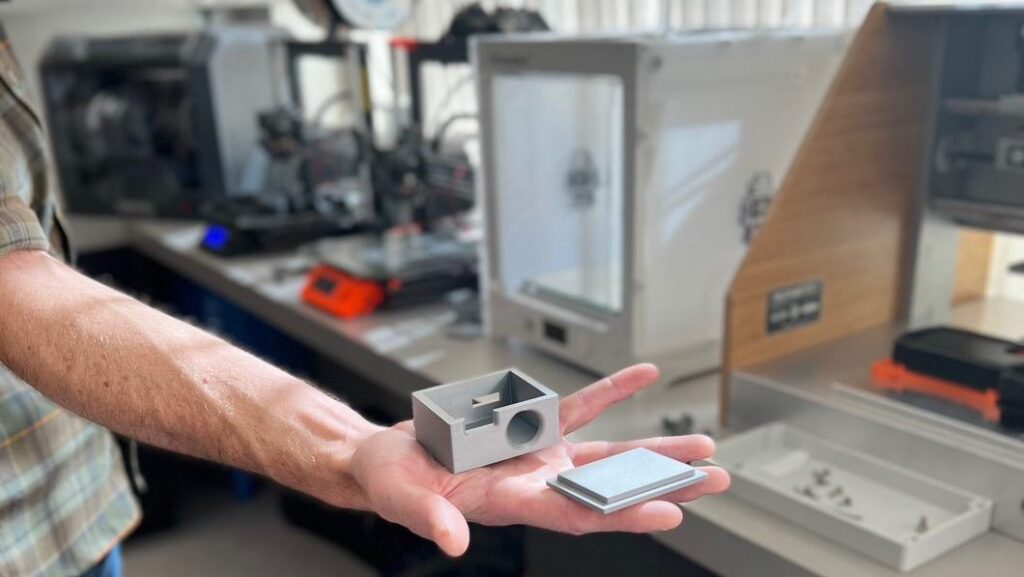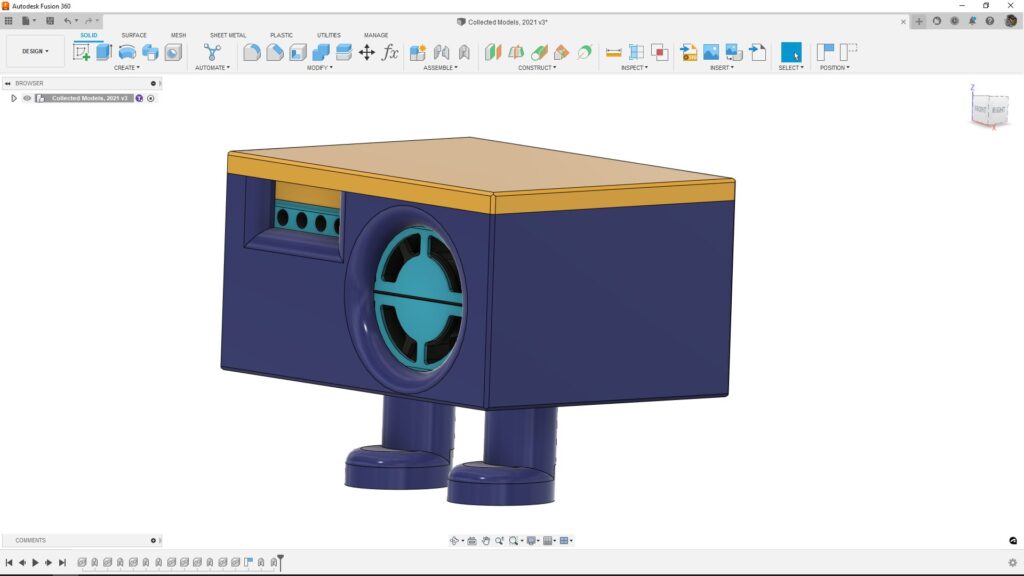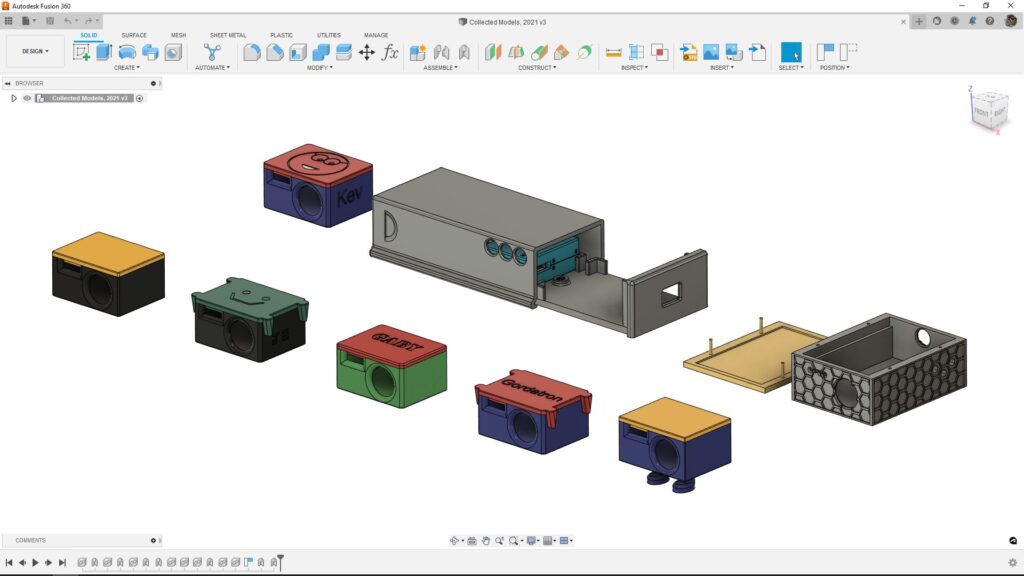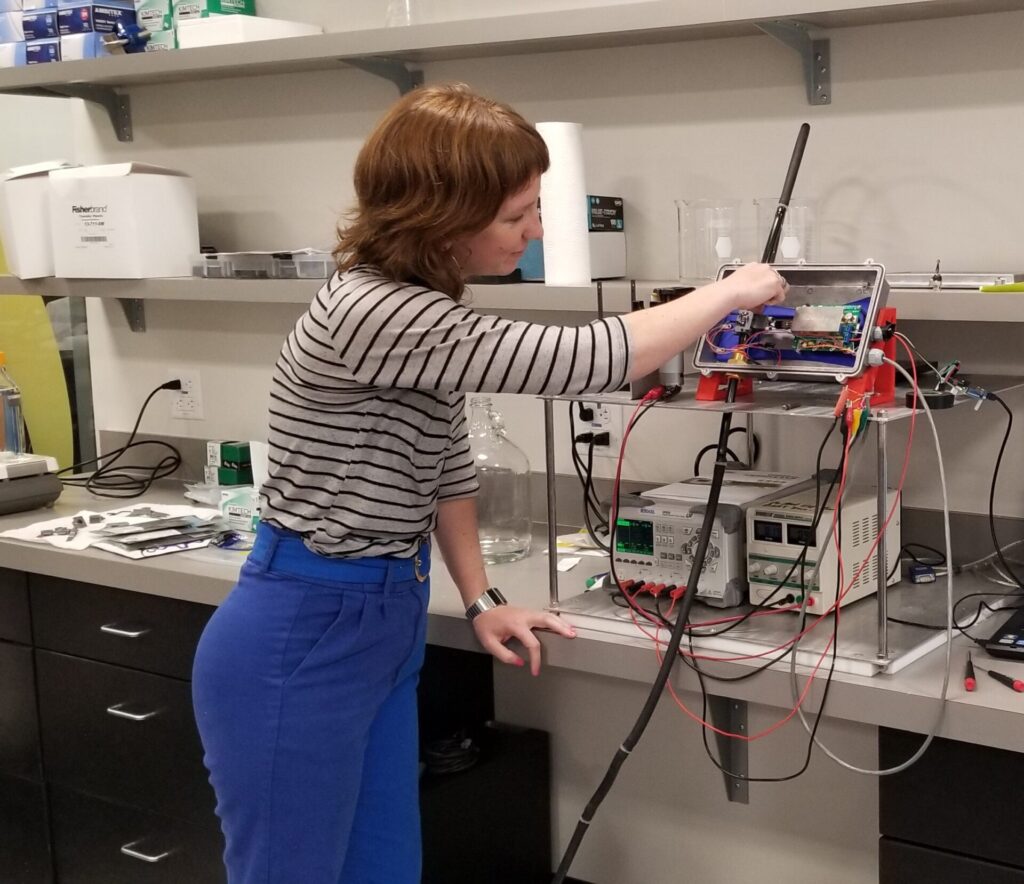
At the Mortenson Center in Global Engineering (MCGE) at the University of Colorado Boulder (CU Boulder), a dedicated group of faculty, undergraduate, and graduate students are working to make a difference in the detection and measurement of environmental contaminants—in part through design and manufacturing skills. Through the Center’s Global Engineering Certificate Program, students learn interdisciplinary skills with an eye on improving the effectiveness of public health and infrastructure systems. Part of that focus gives students the mission of designing and manufacturing pollutant sensors that collect vital environmental data for analysis.
Designing engineers
The Graduate Certificate in Global Engineering has included courses focused on public health measurement tools, where students take an electronics lab that teaches them how to sense particulate air pollution. Among the skills taught, students learn basic breadboard wiring, microcontroller use, data collection, firmware development, and basic mechanical CAD instruction within Autodesk Fusion 360. Taylor Sharpe, a PhD student in environmental engineering and manager of the MCGE labs, says that most of the students come from a civil or environmental engineering background, so if they have any CAD experience, it tends to come from architecture rather than electronics or product design. So the program uses Fusion 360 because it makes the new territory of mechanical CAD product design digestible to students with little prior CAD knowledge or with some CAD knowledge from another field or another software program.
The students receive an example CAD file of an air-quality sensor enclosure and must design a new one with at least some modification. They then work with an instructor to 3D print the enclosure from Mortenson’s rapid prototyping machine shop. Finally, each student tests the sensor and enclosure by cooking in their home and analyzing resulting air quality data.

Sharpe says these sensor modules detect one thing: particulate matter 2.5 (PM2.5)—tiny air pollutant particles of 2.5 micrometers or less in width. (There are 1000 micrometers per millimeter.) When concentrated enough, PM2.5 reduces visibility with hazy air, but more importantly damages human health. According to the WHO, PM2.5 caused 4.2 million premature deaths in 2016, 91% of those in low- and middle-income countries. Such pollution can lead to heart disease, stroke, various cancers, asthma, and acute lower respiratory infections (ALRI)—the leading cause of mortality or morbidity in children under five.
Environmental contaminant measurement

Mortenson students’ sensor experiments teach them to measure PM2.5 levels and to analyze the data from all the students’ cooking sessions, including variables such as whether or not there was a ventilation hood present. They also calculate and discuss the air pollution results in terms of potential impact on public health. “One of our focuses as a program is on high-quality, persistent measurement,” Sharpe says, “which has historically been severely lacking in international development.”
Learning the basic skills of electronics, CAD product design, and advanced manufacturing with the help of Fusion 360 contributes greatly to producing interdisciplinary engineers.
Such skills fit Mortenson Center’s goal of teaching engineering as a path to positively impact the world, but Sharpe says they also serve the purpose of training “T-shaped” engineers: those with a specialty (the vertical line of the T), but also a broad understanding and skillset (the horizontal line of the T). Program certificate graduates learn a particular branch of engineering, as well as adjacent disciplines like economics and disaster response. Sharpe notes that learning the basic skills of electronics, CAD product design, and advanced manufacturing with the help of Fusion 360 contributes greatly to producing interdisciplinary engineers.
To assist in its effort to make Global Engineering a force for good, the Autodesk Foundation has provided financial and technical support through grants and software donations to the Mortenson Center. “The Foundation’s support has been instrumental in helping us build out and utilize a rapid prototyping miniature machine shop where we design and manufacture sensors with a set of 3D printers, desktop CNCs, laser cutting equipment, and soldering equipment,” Sharpe says.
The center’s research team uses Autodesk Eagle and Fusion 360’s Electronics workspace to produce printed circuit boards and design other electrical and mechanical components. Fusion 360 also plays into running the shop’s machines both in prototyping and production modes. The team’s products have so far deployed in Global Engineering intervention projects in Kenya, Ethiopia, Rwanda, Sierra Leone, Nigeria, and the US.
“These products often form the backbone of our research,” Sharpe says, “allowing the measurement of many environmental parameters and to generate data for analysis to help understand and improve the impact of this sector overall.”
Making an impact where it counts most
While the Mortenson Center embraces advanced technology as way to advance global engineering, it also uses that technology not to create devices for individual people, but to improve whole systems, such as drinking water delivery or food production. “Rather than making products that would be sold to a resident in an unplanned settlement in Kenya, we make products in partnership with the local utility tasked with providing water or sanitation services,” Sharpe says. “This ties into our goal of producing multidisciplinary engineers. We want our graduates to understand that design is an integral part of any system that can alleviate poverty or improve public health, but it needs to be situated within larger structures.”
Graduates have taken up positions in government, non-profits, and the private sector in all the areas where the Mortenson Center has research expertise.
That also relates to the program’s goal to move the engineering sector toward addressing the root causes of poverty, according to Program Coordinator Sarah Goodroad. Since 2006, Global Engineering Certificate graduates have entered the professional world “prepared to solve engineering and science problems within the socioeconomic, environmental, and political constraints often encountered in low-resource settings,” she says.
Graduates have taken up positions in government, non-profits, and the private sector in all the areas where the Mortenson Center has research expertise—air quality, WASH (water, sanitation, and hygiene), in-situ and remote sensing, impact evaluation, infrastructure, agriculture, and water management technology—for employers like the World Bank, Oxfam, Bridges to Prosperity, Water for People, Range of Motion Project, and Action Against Hunger. Goodroad says that design skills are vital for driving innovation in all of those areas, and graduates have gone on to invent new technology and become leaders in their fields.
As one example, the 2022 PhD graduate in environmental engineering Emily Bedell developed and validated a new sensor for E. coli risk detection in water with an 83% accuracy rate for detecting contamination in surface waters in real time. The sensor combines with a machine learning model using fluorescence to show fecal contamination spikes in real-time. Her research was recently published in Water Research and could improve the detection of a variety of contaminants in water systems. Goodroad says that both Bedell’s sensor and machine learning model combination have been approved for US patents.

Workforce preparation and job placement
With its Global Engineering Graduate Certificate, the Mortenson Center both influences the direction of global impact engineering education, while also specifically preparing graduates for the workforce. In 2021, Mortenson Center staff and faculty led a group of experts from across North America in writing and publishing A Body of Knowledge and Pedagogy for Global Engineers, published in the International Journal for Service Learning in Engineering. This publication built on the Center’s 15 years of curriculum development to frame global engineering as a complement to global health and development economics that also considers the historical and present causes of persistent poverty and systemic barriers to prosperity.
The Mortenson Center both influences the direction of global impact engineering education, while also specifically preparing graduates for the workforce.
Both the online and in-person certificate programs require two courses: Global Development for Engineers introduces students to the basic theory, institutional architecture, and practice of international development. They study the barriers to sustainable development and identify key strategies and approaches to solving some of the world’s most pressing challenges. And the Global Development Field Practicum challenges students to apply their accumulated knowledge as they engage in a significant field-based experience. Students then choose an area of specialization such as humanitarian aid, project management, household energy, field methods, and WASH.
Graduates often find jobs through their Mortenson Center connections, or work with the center’s partners in the field.
Whether for new students or working professionals who want to gain skills for entering the field of global engineering, the program builds skills in data analysis, impact evaluation, and systems thinking in preparation for real-world jobs.
Goodroad says graduates often find jobs through their Mortenson Center connections, or work with the center’s partners in the field. The program’s website lists most of its alumni with their LinkedIn profiles, and it has hosted events like alumni panels for current students. “Our alumni are inspiring and very passionate about the work they are doing,” Goodroad says. “We enjoy following their ongoing success.”